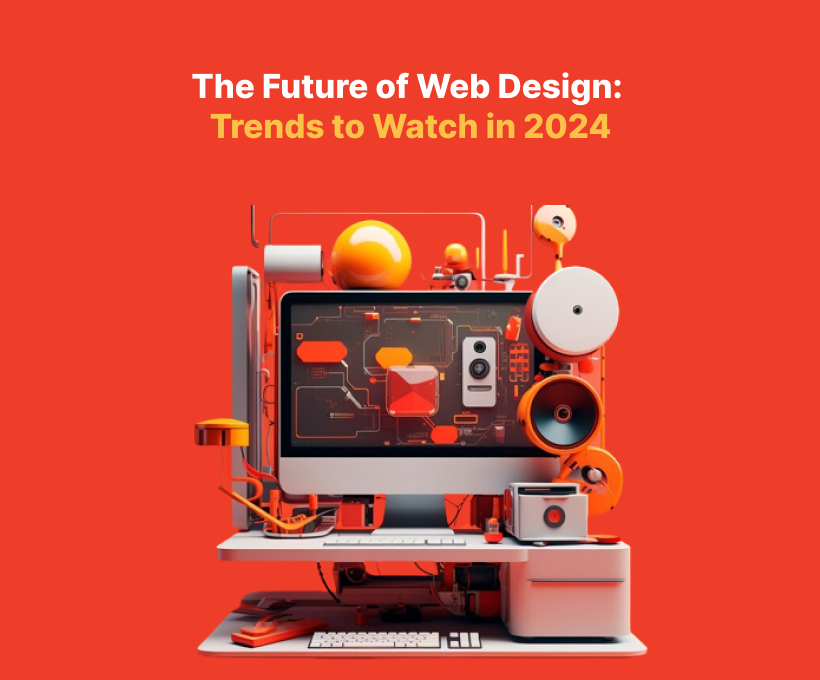As we navigate through 2024, the landscape of web design continues to evolve at a rapid pace. Staying ahead of the curve is crucial for designers who want to create cutting-edge, engaging websites that meet the demands of modern users. From emerging technologies to shifts in user behavior, several trends are shaping the future of web design. Here’s a detailed look at the key trends to watch in 2024.
1. AI and Machine Learning Integration
Artificial Intelligence (AI) and Machine Learning (ML) are transforming web design, making it more intuitive and personalized. These technologies enable designers to create websites that adapt to user preferences and behaviors in real-time.
- AI-Powered Design Tools: Tools like Adobe Sensei and Figma’s AI features are making it easier to automate routine design tasks, allowing designers to focus on creativity and strategy.
- Personalized User Experiences: AI can analyze user data to deliver personalized content, product recommendations, and user journeys, enhancing engagement and conversion rates.
- Chatbots and Virtual Assistants: Intelligent chatbots and virtual assistants provide instant customer support and can handle a wide range of inquiries, improving user satisfaction.
2. Voice User Interface (VUI)
With the rise of smart speakers and voice-activated devices, Voice User Interfaces (VUI) are becoming increasingly important in web design.
- Voice Search Optimization: Designers need to optimize websites for voice search by focusing on natural language and long-tail keywords.
- Voice Navigation: Incorporating voice navigation features can make websites more accessible and user-friendly, especially for users with disabilities.
- Conversational Interfaces: VUI can enhance user interaction through conversational interfaces that provide a more engaging and intuitive experience.
3. Dark Mode
Dark mode has gained immense popularity due to its aesthetic appeal and usability benefits. It reduces eye strain, saves battery life on mobile devices, and can create a sleek, modern look for websites.
- User Choice: Offering a dark mode option allows users to choose their preferred viewing experience, enhancing comfort and satisfaction.
- Design Flexibility: Dark mode can highlight certain elements and create a dramatic, elegant effect, making it a versatile design choice.
4. 3D Graphics and Immersive Experiences
Advancements in web technology are enabling more complex and immersive visual experiences, including 3D graphics, animations, and virtual reality (VR).
- Interactive 3D Elements: Incorporating 3D models and interactive elements can make websites more engaging and memorable.
- VR and AR Integration: Virtual Reality (VR) and Augmented Reality (AR) can provide immersive experiences, especially for e-commerce, real estate, and gaming websites.
- WebGL and Three.js: These technologies make it easier to create and integrate 3D graphics directly into web browsers without compromising performance.
5. Minimalism and White Space
Minimalist design continues to be a strong trend, focusing on simplicity and functionality. White space, or negative space, plays a crucial role in minimalist design by creating a clean, uncluttered look.
- Focus on Content: Minimalist design puts the focus on the content, ensuring that users are not distracted by unnecessary elements.
- Improved Usability: By reducing clutter, minimalist design improves usability and navigation, making it easier for users to find what they need.
- Aesthetic Appeal: Clean, simple designs are visually appealing and convey a sense of professionalism and sophistication.
6. Sustainable Web Design
As environmental concerns grow, sustainable web design is becoming a significant consideration. This involves creating websites that consume less energy and resources.
- Efficient Coding: Optimizing code to reduce server load and energy consumption can make websites more sustainable.
- Green Hosting: Choosing web hosting providers that use renewable energy sources can significantly reduce a website’s carbon footprint.
- Lightweight Design: Reducing the use of heavy images, videos, and other resource-intensive elements can improve load times and decrease energy usage.
7. Micro-Interactions
Micro-interactions are subtle animations or responses that occur in response to user actions. They enhance the user experience by providing feedback, guiding tasks, and adding a touch of delight.
- Button Animations: Adding animations to buttons when they are clicked or hovered over can make the interaction feel more responsive and engaging.
- Loading Indicators: Creative loading indicators can keep users engaged while they wait for content to load.
- Form Validation: Real-time form validation that provides instant feedback can improve usability and reduce errors.
8. Asymmetrical Layouts
Breaking away from traditional grid-based layouts, asymmetrical designs offer a unique and dynamic visual experience. This trend allows designers to experiment with balance and tension in their layouts.
- Dynamic Aesthetics: Asymmetrical layouts create a sense of movement and flow, making websites more visually interesting.
- Highlighting Content: Designers can use asymmetry to draw attention to specific content or elements, guiding the user’s focus more effectively.
- Creative Freedom: This trend offers more creative freedom, allowing designers to push the boundaries of traditional design norms.
9. Accessibility and Inclusivity
Ensuring that websites are accessible to all users, including those with disabilities, is not just a trend but a necessity. Inclusive design practices are gaining more recognition and importance.
- WCAG Compliance: Adhering to the Web Content Accessibility Guidelines (WCAG) ensures that websites are accessible to users with various disabilities.
- Accessible Design Elements: Using proper contrast ratios, keyboard navigation, alt text for images, and screen reader compatibility are essential practices.
- Inclusive Content: Creating content that is inclusive and respectful of diverse audiences enhances the overall user experience.
10. Cybersecurity and Privacy
With the increasing number of cyber threats, focusing on cybersecurity and user privacy is more important than ever. Websites need to build trust by ensuring that user data is protected.
- SSL Certificates: Ensuring that websites use SSL certificates to encrypt data and protect user information.
- GDPR Compliance: Adhering to privacy regulations like GDPR to ensure that user data is handled responsibly and transparently.
- Secure Authentication: Implementing secure authentication methods, such as two-factor authentication, to protect user accounts.
Conclusion
The future of web design in 2024 is exciting and full of potential. By staying informed about these trends and integrating them into your design practices, you can create innovative, user-friendly, and visually stunning websites. Whether you’re leveraging AI, enhancing accessibility, or focusing on sustainability, these trends will help you meet the evolving needs of users and stay ahead in the dynamic world of web design.

